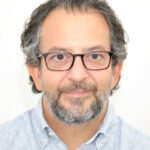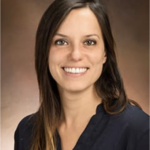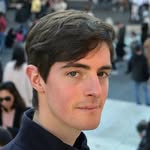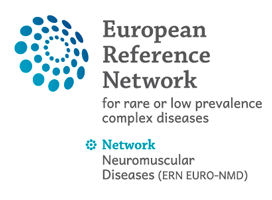 Greta Alì
Greta AlìAOU PISANA HOSPITAL
Azienda Ospedaliera Universitaria Pisana, U.O.C. Neurologia
The Neuromuscular Unit of Pisa is responsible of the diagnosis, the treatment, the clinical and instrumental follow-up and the multidisciplinary management of patients with neuromuscular disease. The Neuromuscular Unit of Pisa is a regional certified expert center for the diagnosis and treatment of rare diseases. There are 12 inpatient beds and 8 beds of urgency. Day Service Paths are provided. Patients are followed in 5 specific surgeries: one for Myopathies, one for Motor Neuron Diseases, one for Peripheral Neuropathies, one for Neurogenetic Disorders including mitochondrial diseases and one for Myasthenia Gravis and related diseases. A laboratory for the neurophysiology and a laboratory for the analysis of CSF, dysimmunity’s assessments and a DNA laboratory are available. The Neuromuscular Unit has developed the following main areas of research:
1- muscular dystrophies: epidemiological studies and clinical correlation – molecular in multi-center case studies;
2- mitochondrial and metabolic myopathies: studies of molecular and clinical genotype-phenotype correlation, description of case studies and pathophysiology studies on metabolic disorder, ultrastructural analysis;
3- myotonic syndromes: study of causal mutations, genotype – phenotype analysis, physiopathogenetic mechanisms research;
4- disendocrine and vascular myopathies: study of ischemic myopathy, Oxidative metabolism during muscle exercise and its molecular pathogenesis, with particular reference to transcription factors; muscle molecular impact of hypothyroid myopathy;
5- amyotrophic lateral sclerosis: study of biological and neuroimaging markers, genetic studies on causal mutations and susceptibility’s profiles, genotype-phenotype studies and penetrance/dominance studies; oxidative status and its correlation with muscle exercise, clinical and pharmacological trials;
6- genetic myopathy: studies genotype-phenotype correlation, natural history, ultrastr! uctural analysis;
7- inflammatory myopathy; natural history, treatment response, comorbility;
8- myasthenia gravis: natural history, comorbility, thymic surgery, treatment response, pathophysiology studies.
The scientific and research activities were carried out in collaboration with national and international research centers and laboratories, participating in numerous multi-center clinical studies in evaluating of the natural history of neurological diseases and therapeutic innovative and experimental therapies. The diagnosis of neuromuscular disorders relies on specific instrumental tests, also in relation to research methods, and molecular biology methods for the genetic diagnosis. Genetic counselling is also provided. Electrophysiological studies provide electromyography, Electroneurography and evoked potentials. Neuroimaging assessments include muscular and nerve ultrasound and MRI, brain MRI with spectroscopy and functional MRI, high and ultra-high field MRI studies (3T and 7T). Biopsies of muscle and nerve with immunohistochemical analysis, biochemical and ultrastructural study. Laboratory assessments with serological and autoimmune profile, also related with muscle strength and exercise. Clinical follow-up provides for regular outpatients visits with the administration of clinical scales, instrumental and laboratory measurements, prediction of therapeutic interventions, management of complications and planning for the future interventions. Clinical evaluations are the occasion of research and trials. Therapeutic interventions are also provided and checked. Multidisciplinary management ensures regular neurology, pneumologist, cardiology, otolaryngology, nutritional, physiatric/rehabilitation, psychiatric/psychological, endocrinology and palliative assessments and surgery advice. Multidisciplinary intervantions comprises respiratory function assessment and Invasive and Non-invasive Ventilation, swallowing and nutritional assessment, Percutaneous Endoscopic Gastrostomy (PEG) insertion, full cardiac! assessm ent, pace maker/defibrillator implantation, physiotherapy, occupational therapy, orthotics, orthopaedic surgery.
Contact
 Greta Alì
Greta Alì Guja Astrea
Guja Astrea Sigrid Baldanzi
Sigrid Baldanzi Francesca Bianchi
Francesca Bianchi Mirco Cosottini
Mirco Cosottini Romano Danesi
Romano Danesi Gabriella Fontanini
Gabriella Fontanini Melania Guida
Melania Guida Michelangelo Mancuso
Michelangelo Mancuso Vincenzo Montano
Vincenzo Montano Gabriele Siciliano
Gabriele Siciliano Luigi Papi
Luigi Papi
 Rosa Pasquariello
Rosa Pasquariello Roberta Ricciardi
Roberta Ricciardi Filippo Maria Santorelli
Filippo Maria Santorelli Erika Schirinzi
Erika Schirinzi Costanza Simoncini
Costanza Simoncini Benedetta Toschi
Benedetta Toschi Virna Zampa
Virna Zampa Constanza Simoncini
Constanza Simoncini Giulia Ricci
Giulia Ricci Michelangelo Maestri
Michelangelo Maestri Rosanna Calabrese
Rosanna Calabrese Manuela Lavorato
Manuela Lavorato Francesco Daddoveri
Francesco Daddoveri
